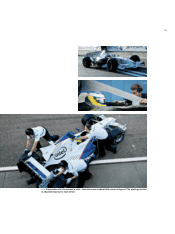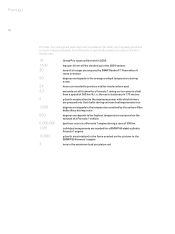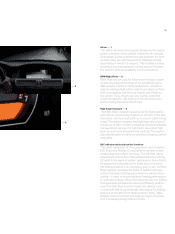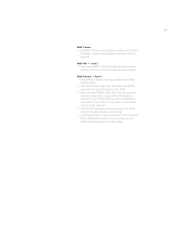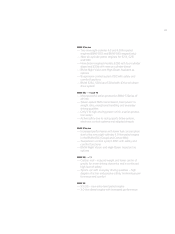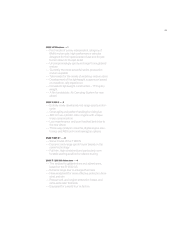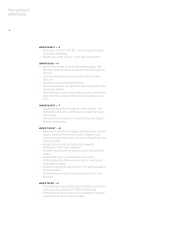BMW 2005 Annual Report Download - page 185
Download and view the complete annual report
Please find page 185 of the 2005 BMW annual report below. You can navigate through the pages in the report by either clicking on the pages listed below, or by using the keyword search tool below to find specific information within the annual report.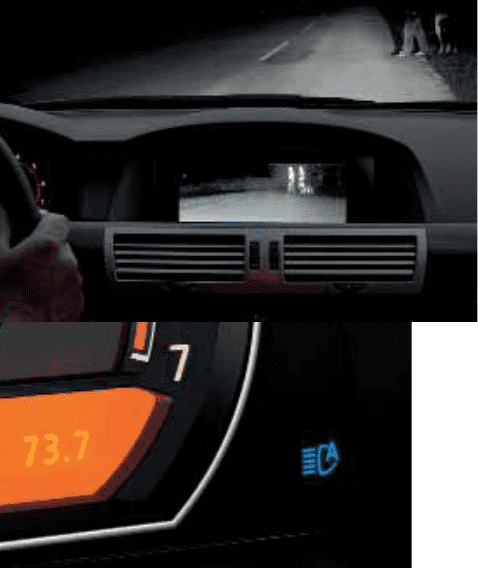
35
xDrive – – 1
The xDrive all-wheel drive system distributes the engine
power to the four driven wheels in fractions of a second.
If necessary, power is shifted not only between the front
and rear axles, but also between the individual wheels,
depending on where it is required.This increases driving
dynamics, ensures maximum traction and can maintain
the vehicle’s directional stability in critical situations.
BMW Night Vision – –2
BMW Night Vision uses Far Infrared technology to cover
an area way beyond the range of the headlamps (up to
300 metres). It detects mainly pedestrians, animals or
objects radiating heat, which makes them stand out from
their surroundings and show up brightly and clearly on
the screen.Thus, drivers can very quickly check the
screen for hazards – like looking in the rear view mirror –
without taking their eyes off the road.
High-Beam Assistant – – 3
The High-Beam Assistant ensures that the high beam is
switched on automatically. A sensor at the front of the
rear-
view mirror monitors road traffic up to around 1,000 metres
ahead.The system analyses the brightness and colour of
the source of light in order to imitate as closely as possible
the way drivers operate the high beam. As a result, high
beam is used more frequently and correctly. This system
also reduces strain on the driver and thus increases comfort
and safety.
DSC with new safety and comfort functions
The latest generation of the suspension control system
DSC (Dynamic Stability Control) offers a number of addi-
tional safety and comfort functions.The Hill Start Assist
prevents the vehicle from rolling backwards when setting
off uphill. In the event of sudden deceleration, Brake Stand-
by applies the brake pads to the brake discs to shorten
the braking distance in an emergency stop. In rain, the Rain
Brake Support operates the brake at defined intervals –
without the driver noticing and without the vehicle decel-
erating – in order to ensure optimum braking performance
on wet road surfaces. When the brakes get very hot, Fading
Compensation achieves the usual good braking perform-
ance.The Soft Stop function makes the vehicle come
to a smooth halt by automatically decreasing the braking
pressure at the end of the braking cycle. Finally, Trailer
Stability Control monitors the swaying motion of a trailer
and, if necessary, brings it back into line.
– – 3
– – 2





